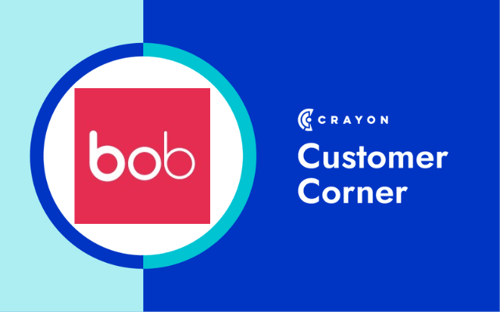Competitive Intelligence helps businesses navigate evolving markets and stay ahead of the competition. At the heart of this work are incredibly talented professionals—many of them women—who are driving innovation, uncovering critical insights, and shaping business strategy in impactful ways.
This Women’s History Month, we sat down with some of the brightest minds in CI to ask them the big questions: How did they get started? What’s the most impactful CI work they’ve done? What challenges and trends excite them? And what superpowers make them great at what they do? Their insights reveal not just the impact of CI today but where it’s heading next.
From unexpected career pivots to game-changing discoveries, these professionals are not just shaping the future of CI—they are the future of CI.
How Women Found Their Way into CI
Some careers follow a straight path—Competitive Intelligence is often not one of them. Many CI professionals don’t set out to enter the field, yet they find themselves drawn to it through curiosity, problem-solving, and an insatiable appetite for strategy.
Some come from marketing, others from research, intelligence, or even academia. But no matter their background, what unites them is a knack for uncovering hidden insights, asking the right questions, and making connections others might miss. Their stories remind us that CI isn’t just about watching competitors—it’s about thinking ahead, seeing patterns, and guiding companies toward smarter decisions.
For Eileen Bazin (Paychex), it was her inquisitiveness that led her to CI. She had a habit of asking the tough questions—ones no one else had considered. Eventually, leadership noticed and invited her to help launch an experimental CI program. What started as a small initiative grew into a full-scale intelligence function that helps shape corporate strategy.
Lisa Persico (BILL) also had a nontraditional entry into CI. With a background in market research, she found herself naturally drawn to the storytelling side of competitive intelligence, turning raw data into insights that drive strategic decisions.
Similarly, Carolyn Klinger (Affinity.co) transitioned from government intelligence to the private sector, searching for a role that allowed her to apply her analytical skills. She found that CI sits at a fascinating intersection between competitor movements, market trends, and customer feedback—making it the perfect fit.
For Xiaoyue Qin (BILL), her journey started in academia, where she developed strong research skills during her PhD. She later discovered that CI is like detective work for business, combining her love for data with strategic problem-solving.
"Losing a deal you should have won is a wake-up call. Early in my career, I saw a competitor outmaneuver us—not because their product was better, but because they understood the market dynamics better. I realized that CI isn’t about reacting; it’s about predicting. And if you’re not doing it, your competitors definitely are."
Senior Product Marketing Manager @ Prewave
While their paths may have been different, these women prove that there’s no single way to succeed in CI—what matters is a mindset. For those wondering how to break into CI, the answer is clear: Ask the questions no one else is asking, dig deeper than others do, and never stop being curious.
Beyond Battlecards: CI Work That Changed the Game
Competitive Intelligence isn’t just about keeping tabs on competitors—it’s about driving real business impact. The most successful CI professionals go beyond tracking trends; they shape company strategy, refine messaging, and enable teams with intelligence that translates into action.
For the women we interviewed, CI has been more than just reports and battlecards—it has led to transformational shifts in how their companies compete and win.
For Sam Niro (Talkdesk), a simple messaging analysis project became the catalyst for a strategic positioning and messaging conversation. What started as a webpage audit quickly evolved into a broader discussion on how Talkdesk presents itself in the market today and as the landscape evolves. Years later, she could still see the ripple effects of that work.
Elina Bazinas (Prewave) used her experience in monitoring sales conversations and publicly available data to better understand competitors strategies. Her insights helped the company adjust its positioning and equip sales teams with better objection-handling strategies—ultimately making them more competitive in high-stakes deals.
Tina Vo (Renaissance) helped spearhead a competitive strategy, bringing together the marketing, product and sales teams to create a centralized strategy against a key competitor. The strategy didn’t just help her team win more deals—it became a model for how the company approaches all competitors moving forward.
Daniella Smith (Yoobic) focused on optimizing battlecards—ensuring that they weren’t just static documents but living, breathing resources for sales teams. By making them more intuitive and data-driven, she saw a major increase in adoption and usage across teams.
Meanwhile, Lisa Paredes (Oyster HR) worked on a win/loss analysis program that reshaped how the company approached competitive positioning. By gathering direct customer insights and turning them into actionable recommendations, she helped teams refine messaging and product strategy.
"The biggest transformation wasn’t just setting up competitive intelligence—it was taking it beyond traditional sales enablement. We built a full-scale program with dozens of collaborators across teams. It’s not just about tracking competitors; it’s about preparing for market shifts and making intelligence a core part of company strategy."
Sr. Corporate Strategy Analyst, Paychex
From redefining messaging to building smarter sales strategies, these leaders have demonstrated that CI is an essential, strategic function—not just a supporting role. Their work has not only impacted individual deals but has also helped reshape entire go-to-market strategies, enhance sales enablement, and drive competitive wins at scale.
These experiences prove that when CI is deeply embedded in a company’s DNA, it becomes a competitive advantage that lasts far beyond a single campaign.
The AI Debate: Opportunity or Challenge?
Few innovations have sparked as much discussion in the CI world as AI. It has the power to automate intelligence gathering, surface insights faster, and free up time for strategic analysis. But with that power comes new challenges—how do we ensure AI-driven intelligence is accurate, actionable, and aligned with business needs?
The CI professionals we spoke with see AI as both a game-changer and a responsibility. It’s not just about gathering more information—it’s about ensuring that information is filtered, understood, and turned into competitive action.
Mimi An (Akamai Technologies) is keeping an eye on AI-driven personalization in competitive intelligence. She sees the potential for AI to customize insights based on different teams’ needs, ensuring that sales, marketing, and leadership get actionable intelligence tailored to them.
Sonya Goodanetz (Incognito Software) called AI a game-changer for efficiency, allowing her to process competitive data much faster. However, she emphasized that it’s not about collecting more data—it’s about extracting meaning from it.
Meanwhile, Aisling Conroy (AffiniPay) warned of the risk of information overload. While the volume of publicly available competitive data is growing, she emphasized that success in CI will come down to filtering insights and delivering the right information to the right people at the right time.
Kelly Farrell (Intercom) is particularly excited about AI’s ability to automate competitive tracking, making it easier to spot patterns across industries. However, she believes human oversight will always be critical—especially when it comes to strategic interpretation.
"All of the changes and new advances in AI are allowing me, as the competitive intelligence manager, to shift from a battlecard-making machine into a really strategic player. Now, I can spend more time having real conversations, being involved in competitive deal discussions, and thinking about the bigger picture."
Market Intelligence Manager @ HiBob
The future of CI isn’t just about leveraging AI; it’s about knowing when to trust it, challenge it, and use it to amplify human expertise. These conversations confirmed -- the most successful CI professionals will be those who strike the right balance—harnessing AI for efficiency while ensuring that strategic thinking, context, and human intuition remain at the core of competitive intelligence.
CI Superpowers: What Makes a Great CI Professional?
If there’s one thing all these women have in common, it’s their ability to connect the dots and tell a story with data. Competitive intelligence isn’t just about knowing what competitors are doing—it’s about understanding the why behind their actions and predicting their next move.
Every great CI leader brings a unique superpower to the table, whether it’s spotting patterns, remembering critical details, connecting seemingly unrelated information, or transforming insights into strategic action. These superpowers don’t just help their companies win—they help define the future of CI itself. We asked each person what they considered their CI superpower to be, and the responses were inspiring.
For Xiaoyue Qin (BILL), her superpower is curiosity and attention to detail—two skills that help her uncover insights that others might miss.
Eileen Bazin (Paychex) believes that respecting competitors and understanding their long-term patterns makes for stronger intelligence. She focuses on foresight and strategic planning, using competitor data to anticipate market shifts rather than just reacting to them.
Aisling Conroy (AffiniPay) has an incredible memory for small details, which allows her to connect seemingly unrelated data points over time and build comprehensive competitive narratives.
Elina Bazinas (Prewave) described her strength as seeing the story behind the data. She doesn’t just collect competitive insights—she translates them into narratives that influence decision-making across her company.
Daniella Smith (Yoobic) excels at pattern recognition, analyzing transcripts, reports, and internal documents to uncover hidden trends and predict competitor strategies before they unfold.
"I'm competitive by nature, and I think that that really helps me because it's like in a job where you ultimately just want to win more deals. I'm just not okay with the status quo and so I'm constantly tinkering our battlecards, updating our one-pagers, trying different trainings. I always just want to make it a little better. So it's like a constant competition with myself. But that bleeds into what the ultimate goal of my job is."
Senior Product Marketing Manager, Competitive Intelligence @ BILL
What sets these CI leaders apart isn’t just skill—it’s their ability to see what others miss. Whether it’s predicting a competitor’s next move, identifying shifts in the market, or turning raw information into business-changing insights, their work extends far beyond research—it shapes strategy.
In a world overflowing with data, the real competitive advantage isn’t just having information—it’s knowing what to do with it. And that’s where these CI professionals shine.
Advice for the Next Generation of Women in CI
For those looking to break into or advance in CI, the women we spoke with had a few key pieces of advice:
📣 Find internal champions. According to Sam Niro (Talkdesk), building relationships across different departments will help you amplify your insights and make a bigger impact.
🤝 Develop a strong network. Carolyn Klinger (Affinity.co) emphasized the value of CI communities, Slack groups, and industry events where professionals share strategies and insights.
📚 Hone your storytelling skills. Xiaoyue Qin (BILL) reminded us that CI isn’t just about gathering data—it’s about presenting it in a way that influences action.
💡 Advocate for your work. CI doesn’t always get the spotlight it deserves, so Tina Vo (Renaissance) encouraged women to make their impact known by sharing their insights with leadership and positioning themselves as strategic thinkers.
Final Thoughts: Shaping the Future of CI
This Women’s History Month, we celebrate the voices driving CI forward. And if there’s one thing we’ve learned from these conversations, it’s that the future of CI is bright, innovative, and built by those who think strategically, adapt quickly, and turn intelligence into impact.
💙 Happy Women's History Month from Crayon!

Seeing is believing! Check out Crayon for yourself.
Take a Product TourRelated Blog Posts
Popular Posts
-
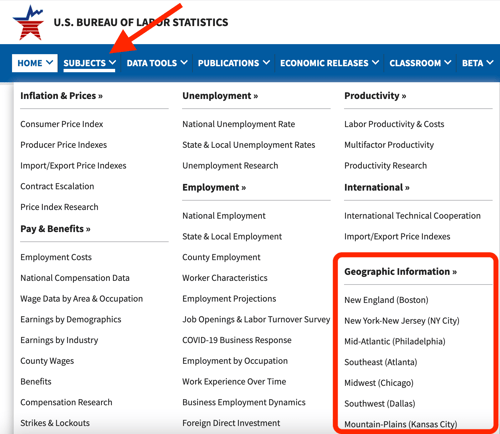 The 8 Free Market Research Tools and Resources You Need to Know
The 8 Free Market Research Tools and Resources You Need to Know
-
 6 Competitive Advantage Examples From the Real World
6 Competitive Advantage Examples From the Real World
-
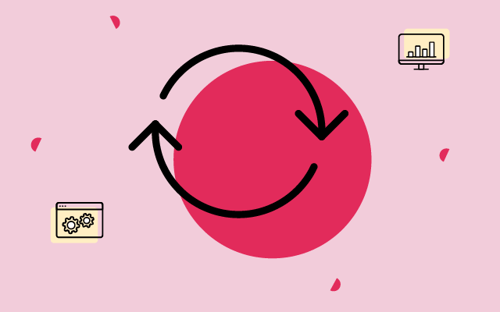 How to Create a Competitive Matrix (Step-by-Step Guide With Examples + Free Templates)
How to Create a Competitive Matrix (Step-by-Step Guide With Examples + Free Templates)
-
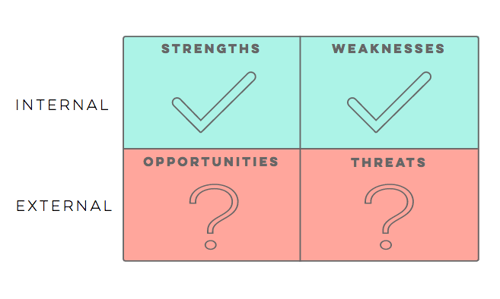 24 Questions to Consider for Your Next SWOT Analysis
24 Questions to Consider for Your Next SWOT Analysis
-
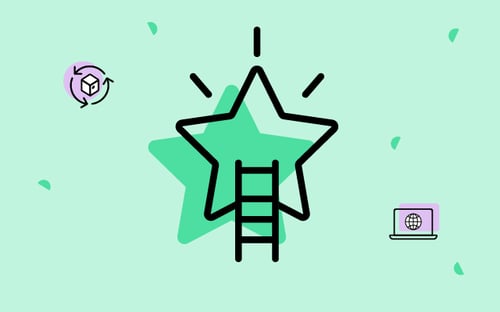 How to Measure Product Launch Success: 12 KPIs You Should Be Tracking
How to Measure Product Launch Success: 12 KPIs You Should Be Tracking


